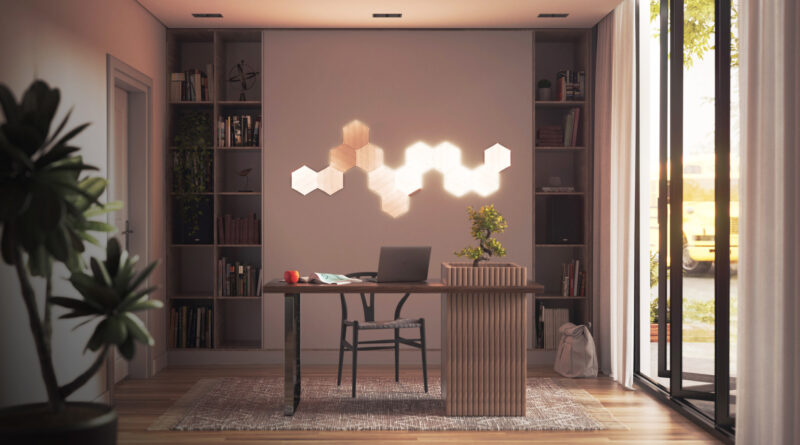This new Nanoleaf smart light feature puts an end to one of the biggest smart home struggles
Smart homes are designed to make your life easier. If, after leaving your home, you are worried that you forget to turn off the lights, you can check your phone, and if you need to turn it off, wherever you are.
Except, that is, your smart home device requires a hub (sometimes known as a bridge) so you can control it when you are not close. So you have to go back home to turn off your smart lights, which means they are just as good, stupid, as standard lights.
Smart Home Brand Nanoleaf, want to solve this problem by giving a nanoleaf form and nanoleaf light panel the ability to act as a border yarn router, allowing you to control compatible smart home devices even when you are not close.
The functionality will be sent as an over-the-air firmware update to the nano controller. Bundled in the brand starter kit, the controller sticks to the light panel using the same plastic connector that connects the panel and allows you to start, stop and replace the color effects of this light panel. At any time, if the controller is not connected to the light panel, the border yarn router functionality will not be available.
Bring smart home devices together
While this might not sound like the update change of the game, it’s good to remember the wireless smart home standard that allows devices from various producers to work together more effectively, and without the need to activate them with each other.
For example, if your smart weather center detects a cloudy day, can turn on your smart lights automatically, even if they are from various brands – it’s not something that is possible with smart home standards such as zigbee and z-wave.
The device makes a network mesh, where all devices are connected to each other and Wi-Fi, which makes the internet connection stronger and more stable. So if one device has a weak or failed connection, the other will take over, strengthen the connection and end the slow response time. The more devices that support the thread you installed in your home, the bigger and stronger mesh tissue is obtained.
Finally, if one of the capable devices this thread can act as a border router of the utas, you will be able to ensure that you can run multiple different device automation when you are not close too – something that usually depends on the smart home hub to convey orders from your smartphone to the cloud and then to your device.
It itself is all great news from the owner of a smart home device, but it is the fact that the nanoleaf is compatible with Android and Apple who really swung it for us. Until now, most devices that can double as a thread border routers are made by Apple, starting with a mini homePod, which is immediately followed by Apple TV 4k – this means that the stability and stability are limited to iPhone users, but now it is no longer a problem.
Eero has also added the capabilities of the border border yarn to several of its router, and Google Home Hub (2nd generation) and Google Nest Wi-Fi can also function multiple as a border router yarn, even though the functionality is inactive. The following hopes that other smart home hub manufacturers can apply similar technologies relatively immediately so that we can all benefit from a smart home that works smoothly without the need for a smart home hub.




